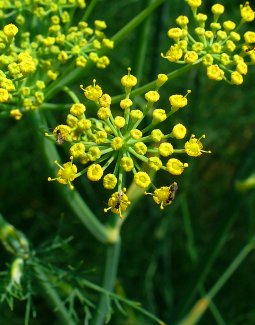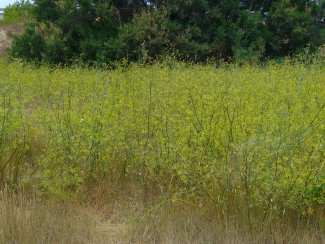Fennel is native to southern Europe and the Mediterranean region. Africa Macaronesia: Portugal - Madeira Islands; Spain - Canary Islands Northern Africa: Algeria; Egypt; Libya; Morocco; Tunisia Asia-Temperate Caucasus: Georgia Western Asia: Afghanistan; Egypt - Sinai; Iran; Israel; Jordan; Lebanon; Syria; Turkey Asia-Tropical Indian Subcontinent: Pakistan Europe East Europe: Ukraine Southeastern Europe: Albania; Bosnia and Herzegovina; Bulgaria; Croatia; Greece; Italy; Montenegro Southwestern Europe: France; Portugal; Spain
Fennel (Foeniculum vulgare) is an erect perennial herb, four to ten feet tall, with finely dissected, almost feathery leaves and characterized by a strong anise scent originating from stems and leaves. The flowers are yellow and small (one-quarter inch across), and are clustered in large, rounded, umbrella-like groups (compound umbels), roughly four inches across, that are conspicuous from April through July. During the growing season plants usually include a mixture of living and dead hollow stems (canes).
Fennel is native to southern Europe and the Mediterranean region, where it has been used for centuries as a spice and for medicinal purposes (Garland 1979). Although details about its introduction are unknown, it has occurred in California for at least 120 years and is presumed to have escaped from cultivation repeatedly (Robbins et al. 1941).


